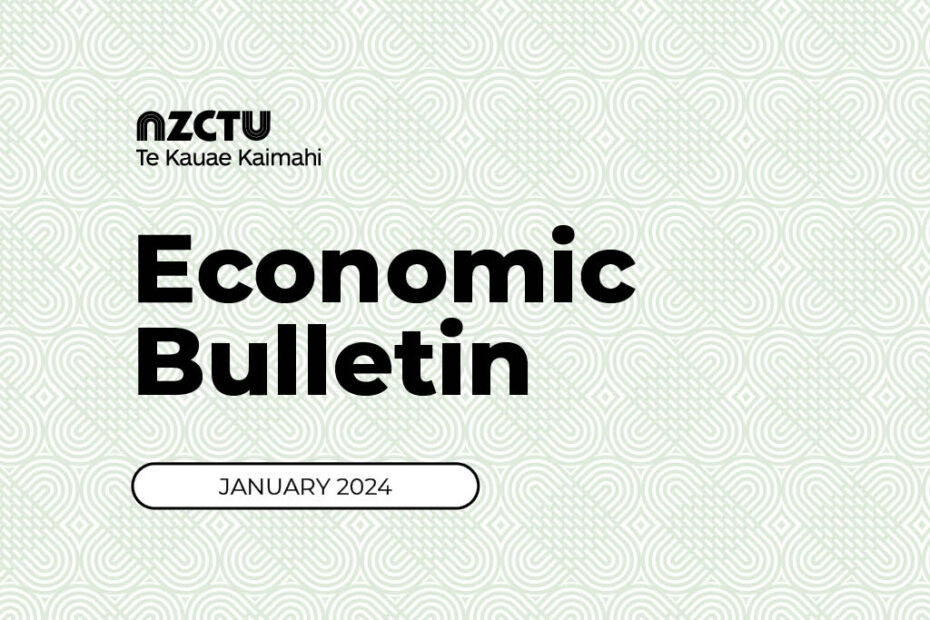Welcome to the January edition of the Economic Bulletin. In our monthly feature, we discuss the labour market outlook for the year, setting the forecast rise in unemployment in the context of the new government’s reforms to employment relations. The Treasury expects that, by mid-2025, around 65,000 more people will be unemployed than in mid-2022, when unemployment was at record lows. Meanwhile, with the reimposition of 90-day trials for all businesses, the repeal of the Fair Pay Agreements Act, and proposed changes to employment law and the welfare system, the new government is setting about removing what security does exist for workers and the unemployed in New Zealand. The government has also announced that the minimum wage will only increase by 2% this April. Because inflation is forecast to be around 4–4.5% for the year ending March 2024, this means that minimum wage workers will experience a real terms pay cut.
In our regular updates, we examine the latest inflation, household living costs, migration, and government accounts data. Consumer inflation continues to fall faster than expected. This is good news for working households and may bring some interest rate relief later in the year. It also shows that the government’s planned spending cuts are unnecessary. The government has argued that high levels of government expenditure has driven inflation, and so we need to cut this spending to bring inflation under control. But inflation has been steadily falling for a year now and is forecast to continue to do so without these cuts.
For the employment and wages data for the September 2023 quarter, please see the October/November 2023 Bulletin. For the GDP and balance of payments data for the September 2023 quarter, please see the December 2023 Bulletin.
As always, please get in touch if you have any feedback or suggestions for areas of future investigation.
